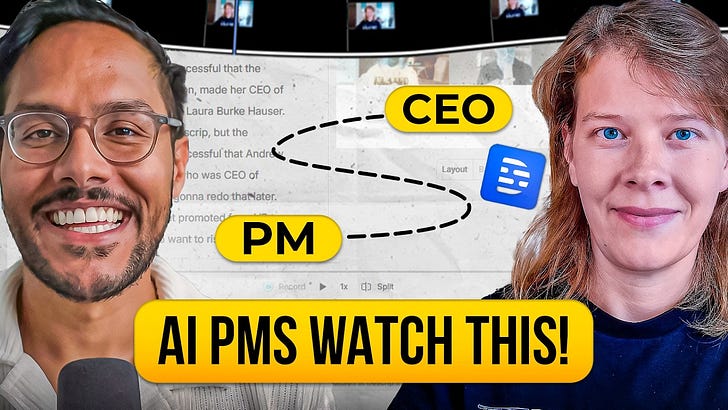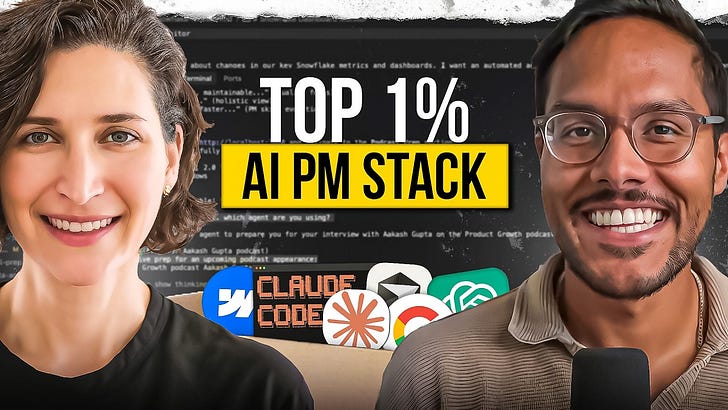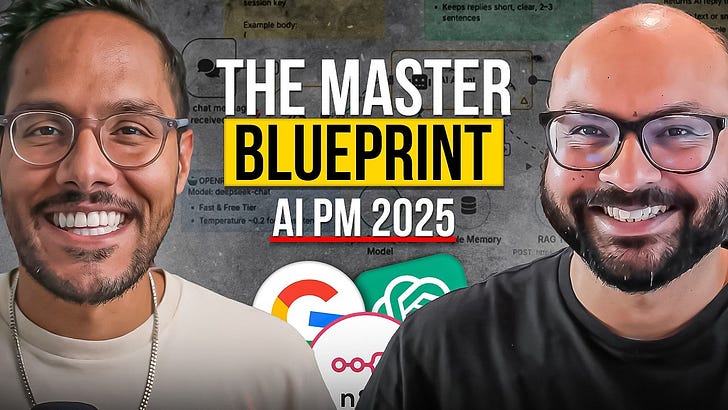Check out the conversation on Apple, Spotify and YouTube.
Brought to you by:
Vanta: Automate compliance, manage risk, and prove trust
Kameleoon: Leading AI experimentation platform
Amplitude: The market-leader in product analytics
The AI Evals Course for PMs: Get $1155 off with code ‘ag-evals’
Today’s Episode
As an AI PM, you’re probably tired of building AI Agents and don’t know how to monetize them.
But what if I told you there’s a company adding $1 million ARR every 10 days with their AI agent?
Zach Lloyd, CEO of Warp and former Google engineering leader, cracked the code. His terminal-based AI agent has 700,000+ active developers paying real money.
It’s an amazing story of revenue growth due to building an agentic product.
This episode is his complete playbook for AI PMs who want to build agents that actually make money.
Your Newsletter Subscriber Bonus
For subscribers, each episode I also write up a newsletter version of the podcast, as a thank you for having me in your inbox.
Today’s complete guide covers:
How to Build AI Agents
How to Scale Your Agentic Products
How to Price AI Agents
1. How to Build AI Agents
The #1 AI PM mistake: Adding a chat sidebar and calling it “agentic.” Zach’s insight:
The chat panel feels like a kind of bolt-on experience to an old style app. Something that’s very deeply native to the UI of your app using intelligence - that’s really powerful.
Don’t build new interaction patterns. Enhance existing ones with intelligence.
Warp’s breakthrough: “The terminal is already oriented around telling the computer what you want it to do. With LLMs, you can tell it what you want to do in English.”
Instead of forcing users to learn new AI interfaces, find where they already express intent and make it understand natural language.
Wrong approach: Add chat panel to spreadsheet app
Right approach: Let users type “show me sales trends by region” directly into cells
The magic happens when users forget they’re using AI because their familiar tool just got smarter.
2. How to Scale Your Agentic Products
2a. The Contextual Suggestion System
Build AI that appears during moments of frustration, not as proactive interruptions.
Warp’s example: When you get a Git error, they automatically suggest “Let agent fix this for you” with one-click activation.
Your framework:
Map friction points: Where do users get stuck or search for help?
Pre-build solutions: Create agent workflows for top frustrating moments
Context detection: Use error states and user behavior as triggers
One-click activation: Make trying the agent easier than dismissing it
2b. Progressive Tool Expansion
Start simple, add capabilities as users build trust. Warp’s evolution:
“At first the agent could just run terminal commands. Since then, we’ve added tools to edit files, read web pages, access file systems.”
Each expansion should feel natural, not like a new feature launch.
3. Pricing Models That Work for AI Products
Traditional SaaS pricing fails with AI agents. Here’s the brutal math and what actually works instead.
This is the AI PM’s nightmare scenario: Your best customers are your least profitable. Power users who love your agent drive up API costs while paying the same monthly fee as light users.
3a. The Variable Usage Problem
The math is unforgiving. Let’s say your subscription is $50/month:
Light user: 100 AI interactions = $5 in API costs = $45 profit
Power user: 2,000 AI interactions = $80 in API costs = -$30 loss
You’re literally losing money on engaged users. Traditional SaaS celebrates high usage. AI products can go bankrupt from it.
3b. The Meter Anxiety Solution
Pure usage pricing seems obvious but creates a different problem: meter anxiety.
When users see costs accumulating in real-time, they self-limit valuable interactions. They start thinking “Is this question worth $2?” instead of focusing on their work.
This kills the agent adoption you’re trying to drive. Users need to feel free to explore and experiment with AI capabilities.
3c. Proven Hybrid Models That Protect Your Margins
Traditional fixed subscriptions can make your best users your least profitable customers.
The math is brutal:
Light user: 100 AI interactions = $5 API costs = $45 profit
Power user: 2,000 AI interactions = $80 API costs = -$30 loss
Warp’s hybrid solution: Fixed base subscription + usage overages above threshold
Like cell phone plans - you get X interactions included, then pay per interaction after.
Key insight: Users understand AI costs money - they want predictability, not surprise bills.
Key Takeaways
Where to Find Zach Lloyd
Related Content
Podcasts:
Newsletters:
P.S. More than 85% of you aren’t subscribed yet. If you can subscribe on YouTube, follow on Apple & Spotify, my commitment to you is that we’ll continue making this content better.


















